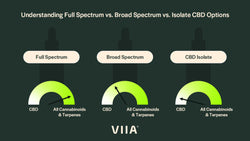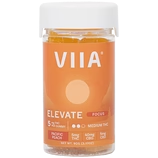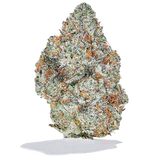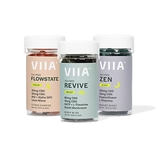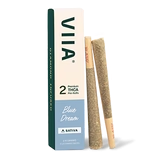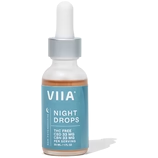 uncategorized
uncategorizedWhat Is Delta 9 THC? Effects, Safety, & Legality
(Article updated 10/29/24)
When most people talk about THC (tetrahydrocannabinol), they’re referring to Delta-9 THC, the most common form of THC in the cannabis sativa plant.
It’s also the most notorious cannabinoid, as it’s responsible for the high associated with cannabis, making it a central focus in discussions about the legal status of cannabis and marijuana use.
What is Delta-9 THC?
Delta-9 THC, short for delta-9-tetrahydrocannabinol, is a phytocannabinoid found exclusively in cannabis plants. This is also the compound most discussed within federal law for cannabis accessibility.
For example, hemp is differentiated from marijuana by the Delta-9 THC content. Hemp cannot contain more than 0.3% THC by dried weight.
The plant produces these compounds as a defense mechanism against herbivores and pests. They have antibacterial and antifungal properties and protect against UV damage [1].
What’s interesting about cannabinoids is how they mimic a group of naturally produced compounds in our bodies called endocannabinoids, which function as both hormones and neurotransmitters throughout the central nervous system.
By mimicking these endocannabinoids, THC can activate various neurological pathways in the body, leading to a range of effects. Some of these include the well-known “high” associated with weed use, as well as potential wellness effects [2].
There are multiple types of THC, each with similar psychoactive properties but with slight variations in their effects, like delta-7, Delta-8, Delta-9, and Delta-10. Out of all of these, Delta-9 is the most abundant form of THC and is widely studied.
Where Does Delta-9 THC Come From?
Delta-9 THC and other cannabinoids are derived from the glandular trichomes of the cannabis plant. These are the delicate hair-like structures found predominantly on the flowers and leaves that are sticky to the touch.
If we want to get even more specific, delta-9 THC begins as cannabigerolic acid (CBGA) in a living plant, which is commonly referred to as “the mother of all cannabinoids.” As the cannabis plant matures, CBGA is transformed into various cannabinoids, including THCA (tetrahydrocannabinolic acid).
THCA itself is non-psychoactive. For it to become THC, it must undergo a process called decarboxylation. This can happen when THCA is exposed to heat or aging, causing it to lose a carboxyl group (COOH) and transform into THC. The conversion of THCA to THC can happen naturally, but it can be expedited through smoking flower, vaping, baking, or other heating methods.
Is Delta-9 THC Natural?
Yes, Delta-9 THC is a natural compound. Products like cannabis flower, hashish, and full-spectrum cannabis extract contain delta-9 THC in its natural form.
Typically, products like pre-filled Delta-9 vape pens, gummies, capsules, and tinctures are made from a cannabis extract and formulated with other ingredients to make it more convenient to use.
While delta-9 THC can also be synthesized in a lab through a chemical reaction with the CBD cannabinoid, the compound is found in nature.
How Does THC Work in the Body?

Delta-9 THC primarily works with the endocannabinoid system (ECS), which is involved in systems that regulate mood, appetite, the immune system, and pain perception [3]. The ECS has two main receptor types: CB1 and CB2.
THC has been observed to interact with CB1 receptors, mostly concentrated in the central nervous system. This initiates a flood of potential effects, including:
- Relaxation
- Altered sense of perception
- Euphoria
- Increased appetite
- Discomfort relief
While CB1 is THC’s primary target, it’s also found to have interactions with CB2, which is found in the peripheral nervous system and more involved with the immune system.
The duration and intensity of THC’s effects depend on the method of consumption of THC, the dose, and the individual’s tolerance and metabolism.
Delta-9 THC vs. CBD: What’s the Difference?
Cannabidiol (CBD) and THC are the two most prevalent cannabinoids in cannabis. They share a similar chemical structure, and both interact with the endocannabinoid system (ECS), but have distinct differences in their effects and how they interact with the ECS.
Chemical Structure

CBD and THC have the same molecular formula (C21H30O2), but their atoms are arranged differently, giving them different properties.
- THC has a cyclic ring structure.
- CBD has an open ring structure.
This difference in structure is what makes THC the primary psychoactive component and CBD non-psychoactive. Considering these structures as keys and the endocannabinoid receptors as locks, the THC molecule, with its cyclic ring structure, is a perfect fit for the CB1 receptor, unlocking a unique set of effects.
CBD, on the other hand, doesn’t have a strong affinity for CB1 or CB2 receptors. Rather, it influences the ECS differently by preventing the breakdown of endocannabinoids, allowing them to remain active longer. This helps to support the body’s natural balance and processes without intoxicating effects.
Legal Status
In the United States, THC is classified as a Schedule I substance under the Controlled Substance Act, meaning it’s federally illegal for any use. However, there are exceptions found at the state level.
Many states have legalized THC for medical use with medical cannabis programs, allowing licensed patients to purchase high-THC products from select dispensaries. Some states have also legalized THC for recreational use, allowing adults (typically over 21) to purchase and consume recreational marijuana.
You see CBD everywhere, from your local grocery stores and gas stations to specialty CBD shops, because the 2018 Farm Bill legalized hemp-derived CBD containing less than 0.3% THC by dry weight.
CBD products can be legally sold and consumed, provided they meet these guidelines. Again, the legality of CBD can vary by state and county, with a few states only allowing CBD for medical use with a doctor’s prescription.
Delta-8 THC vs. Delta-9 THC: What’s the Difference?

Delta-8 THC is an isomer of Delta-9 THC, meaning it has the same chemical formula (C21H30O2) but a slightly different structure. This difference occurs when a double bond is placed within the carbon chain.
While Delta-9 THC has a double bond on the ninth carbon atom, delta-8 THC has a double bond on the eighth carbon atom — and this small change in structure results in significant differences in their effects.
At the moment, the sale of Delta-8 products is in a complex grey area. Within the last year, several states have banned the sale of Delta-8 products, even if they’re hemp-derived, because of the manufacturing process of transforming Delta-8 THC from CBD.
Delta-8 is a minor cannabinoid that isn’t as concentrated in hemp plants. To get significant concentrations of Delta-8 to use in products, manufacturers will take CBD and use acids to convert the CBD molecule into Delta-8. Because this process isn’t strictly regulated, it raises safety concerns. You can still find delta-8 products online, but they aren’t as common.
If you’re interested in purchasing Delta-8 THC products, it’s important to buy from a reputable source with third-party lab tests that verify the purity of this extract, ensuring it’s free from the chemicals used in the conversion process.
Differences in Effects
The slight change in the placement of the double bond results in Delta-8 THC being weaker than Delta-9 in its affinity with CB1 receptors.
Users often describe Delta-8 products as a more clear-headed and mellow high compared to Delta-9. It’s favored for those who tend to have a negative experience with delta-9 THC due to its intensity, resulting in feelings of anxiety and paranoia.
Legality
Compared to Delta-8 THC, Delta-9 THC’s legal status is pretty clear-cut.
Delta-8 exists in a legal gray area. The 2018 Farm Bill legalized hemp plants along with its cannabinoids and terpenes as long as the final product contains less than 0.3% Delta-9 THC. However, because Delta-8 THC can be derived from hemp, it’s often sold in states where Delta-9 THC is restricted.
Nonetheless, some states have specifically banned Delta-8 THC, citing concerns about its unregulated production as a “semi-synthetic cannabinoid” and potential health effects.
Is Delta-9 THC Legal?
As long as a product is hemp-derived and maintains a concentration of Delta-9 THC at or below 0.3%, it’s considered federally legal.
Some states have strict regulations and have banned the use and sale of Delta-9 THC products altogether, regardless of their source, which is why it’s important that you check with your local laws before making a THC order.
The following states and Washington, D.C have legalized the recreational use of cannabis, allowing adults to purchase and consume cannabis products legally:
- Alaska
- Arizona
- California
- Colorado
- Connecticut
- Delaware
- District of Columbia
- Illinois
- Maine
- Maryland
- Massachusetts
- Michigan
- Minnesota
- Missouri
- Montana
- Nevada
- New Jersey
- New Mexico
- New York
- Ohio
- Oregon
- Rhode Island
- Vermont
- Virginia
- Washington
In these states, consumers can purchase cannabis products — including those with higher concentrations of Delta-9 THC — from licensed dispensaries.
What is Delta-9 THC Used For? Its Potential Benefits and More
While its psychoactive effects are well-known, Delta-9 THC also has several potential wellness benefits that have been explored in scientific research.
We’ll go over the research here, but while it’s worth noting that THC may support certain aspects of health, this article should not be used as a resource to self-diagnose or self-medicate with THC products.
We strongly recommend discussing your health concerns with medical professionals. This article is intended for educational purposes only.
Supports Healthy Immune Response
Studies suggest Delta-9 THC may help support the body’s natural inflammatory response through CB1 and CB2 receptors [4].
It’s believed that when Delta-9 THC binds to CB2 receptors, it supports the body’s natural immunomodulatory effect, which is part of a healthy inflammatory response. Essentially, this response helps the body produce fewer substances that trigger an immune response and boost its natural ability to fight it.
Support Discomfort
A common reason many people turn to cannabis use is to support discomfort relief.
There’s research to indicate that Delta-9 THC may influence pain perception and provide relief by interacting with the body’s various pain pathways. The research behind this is why medical cannabis programs exist.
Researchers looked at how well Delta-9 THC helps with central neuropathic pain, which is a tough type of pain to treat. They gave 172 patients an average of 7.5 mg of Delta-9 THC over seven months. Some patients (48) stopped the treatment early because of side effects, not enough pain relief, or the cost. The remaining 124 patients were asked about their experience through a phone survey.
The participants reported less pain, better quality of life, improvements in daily activities, and mental health [5]. That being said, no over-the-counter THC product is FDA-approved to treat or mitigate pain or any other health condition.
Support Relaxation
Delta-9 THC may help support a sense of calm and relaxation by interacting with neurotransmitters in the brain that regulate mood and stress [6]. This is why many people use delta-9 THC to unwind after a long day or to support restful sleep.
We should mention that the relaxing benefits of THC are largely dose-dependent. It’s possible that in high doses and the wrong environment, the psychoactive effects of THC can be overwhelming, leading to heightened stress and anxiety.
Appetite Stimulation
Anyone with experience with cannabis use with high-THC products can attest to the sudden urge to snack on everything in sight, affectionately labeled “the munchies.”
Delta-9 THC interaction with CB1 receptors located in the brain also plays a role in regulating appetite and hunger. When delta-9 THC binds to these receptors, it can enhance the release of certain hormones and neurotransmitters that increase the sensation of hunger.
While it can be a hindrance to those whose health goals are to lose weight, there are potential medical applications to THC’s appetite-stimulating properties, such as for those who have a reduced appetite due to various medical conditions or treatments like chemotherapy [7].
Nausea and Vomiting
Delta-9 THC has been widely researched for its potential to support nausea, making it a valuable tool in various medical settings, especially for patients undergoing intense treatments like chemotherapy [7].
In medical settings, Delta-9 THC is available in various prescription forms, such as dronabinol (Marinol) and nabilone (Cesamet). These medications are specifically formulated to help manage nausea and vomiting in patients with chemotherapy-induced nausea.
Is Delta-9 THC Safe? What Are The Risks?
Delta-9 THC is non-toxic, and it’s considered generally safe for most healthy people. However, there are potential risks. For example, there can be instances where people put themselves at risk of dangerous situations because of intoxication.
Some people might not fare well with the psychoactive effects of THC, and then there are also potential drug interactions, which is why you shouldn’t self-medicate with cannabis.
Abuse and Dependence
THC and other cannabinoids aren’t found to be psychically addictive (like nicotine and opioids), but it is possible to become psychologically addicted to these compounds. This means users may develop a habit of consuming THC to cope with stress and other emotional challenges in an unhealthy way.
While marijuana addiction isn’t particularly common, we want to discuss its potential and what you can do about it if you or someone you love is showing signs of drug abuse.
Signs of Addiction:
- Withdrawal Symptoms: Experiencing irritability, insomnia, or cravings when not using marijuana.
- Loss of Control: Using more marijuana than intended or unable to cut down use despite wanting to.
- Neglecting Responsibilities: Failing to fulfill obligations at work, school, or home due to marijuana use.
- Social Isolation: Preferring to use marijuana alone rather than engage in social activities.
- Continued Use Despite Problems: Using marijuana even when it causes problems in relationships, at work, or health issues.
Addressing Addiction
The most important step is to acknowledge the signs of addiction and understand that it can be a serious issue.
Support from loved ones can be key in overcoming addiction, and more importantly, considering help from a healthcare professional can provide you or your loved ones with guidance and resources for treatment, helping to cut the negative relationship with cannabis use.
Ways to Use Delta-9 THC
These days, we’re spoiled for choice on the different methods we can consume THC. We’ll go over the most popular methods for using THC, along with the type of experience you can expect from each consumption method.
Smoking It
Let’s start with the basics. Smoking cannabis flower — like high THCA flower (for a more legally accessible option) — is the most traditional way to consume delta-9 THC. You can smoke it using joints, pipes, or bongs, and it's known to have rapid onset effects as the THC is quickly absorbed into the bloodstream through the lungs.
Some of the drawbacks to this are that long-term smoking isn’t good for your health, and it’s not the easiest way to get precise dosing of your THC.
Eating It (Edibles)
Our hemp-derived THC-infused gummies are one example of THC gummies, but you can find THC edibles as chocolates, caramels, beverages, and baked goods, too.
It typically takes longer for the effects to kick in — 30-45 minutes — depending on your metabolism, but it's known to have more potent and longer-lasting effects compared to smoking or vaping.
Vaping It
Vaping is often considered less harsh on the lungs compared to smoking. It involves heating the cannabis flower or THC oil at a lower temperature to create a vapor, which is then inhaled. Vaping provides quick effects similar to smoking, as Delta-9 THC is rapidly absorbed through the lungs.
There are numerous vape products available, including disposable vape pens and refillable cartridges, making it a convenient option for on-the-go use.
Tinctures
Tinctures are liquid extracts typically taken sublingually (under the tongue) for fast absorption through the microcapillaries under the tongue. This method allows for easy dosage control, which benefits new users or those needing precise dosing.
Tinctures can also be added to food or beverages if you prefer not to take them directly.
Capsules
Discreet and convenient, capsules can be an ideal way to consume THC without the need for smoking or vaping. They’re easy to carry and make no fuss, making them a good option for those seeking a simple and consistent dosage.
Like edibles, capsules have a delayed onset but provide long-lasting effects, making them ideal for those looking to have a longer duration of effects.
What’s The Standard Dose of Delta-9 THC?
There’s no real official dosing guide to using cannabis products, but having a basic understanding of where to start can make all the difference between having a positive or negative experience with THC.
The appropriate dosage can vary based on your experience level and the method of consumption. Here’s a guide to help you determine the right amount for edibles, tinctures, smoking, and vaping:
Edibles and Tinctures:
Beginners: 2.5 to 5 mg of THC.
Intermediate users: 5 to 10 mg of THC.
Experienced users: 10 to 20+ mg of THC.
Smoking/Vaping: Quantifying the exact dose is more challenging due to variability in inhalation techniques and product potency.
Beginners: A few small puffs (1-2 mg THC).
Intermediate users: Several puffs (2-5 mg THC).
Experienced users: More substantial inhalation sessions (5-10+ mg THC).
The Takeaway: What is Delta-9 THC?
Delta-9 THC is the main form of THC found in the cannabis sativa plant. Its concentration is the main determining factor that separates legal hemp plants from recreational cannabis plants, as it’s primarily responsible for the psychoactive effects associated with marijuana use.
Delta-9 THC interacts with the endocannabinoid system, particularly the CB1 receptors in the brain, influencing various physiological processes such as mood, pain perception, appetite, and relaxation.
Like CBD, you can consume THC in multiple forms, from smoking it and vaping it to eating it, each offering unique experiences and benefits.
While Delta-9 THC is generally safe for most people, it can have potential risks, such as psychological dependence, impaired judgment, and negative interactions with other medications, which is why it’s important to approach THC use with caution.
Resources:
- Andre, C. M., Hausman, J. F., & Guerriero, G. (2016). Cannabis sativa: the plant of the thousand and one molecules. Frontiers in plant science, 7, 174167.
- Robson, P. (2001). Therapeutic aspects of cannabis and cannabinoids. The British Journal of Psychiatry, 178(2), 107-115.
- Zou, S., & Kumar, U. (2018). Cannabinoid receptors and the endocannabinoid system: signaling and function in the central nervous system. International journal of molecular sciences, 19(3), 833.
- Nagarkatti, P., Pandey, R., Rieder, S. A., Hegde, V. L., & Nagarkatti, M. (2009). Cannabinoids as novel anti-inflammatory drugs. Future medicinal chemistry, 1(7), 1333-1349.
- Weber, J., Schley, M., Casutt, M., Gerber, H., Schuepfer, G., Rukwied, R., Schleinzer, W., Ueberall, M., & Konrad, C. (2009). Tetrahydrocannabinol (Delta 9-THC) Treatment in Chronic Central Neuropathic Pain and Fibromyalgia Patients: Results of a Multicenter Survey. Anesthesiology research and practice, 2009, 827290. https://doi.org/10.1155/2009/827290
- al'Absi, M., & Allen, A. M. (2021). Impact of acute and chronic cannabis use on stress response regulation: challenging the belief that cannabis is an effective method for coping. Frontiers in Psychology, 12, 687106.
- Mack, A., & Joy, J. (2000). MARIJUANA AND CANCER. In Marijuana as Medicine? The Science Beyond the Controversy. National Academies Press (US).
